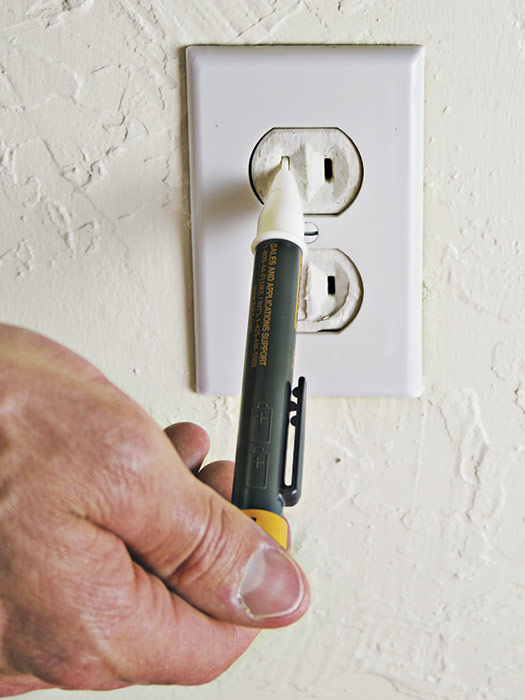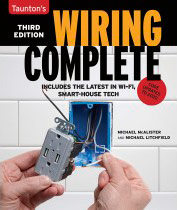Wiring a Duplex Receptacle
Learn how to install a standard electrical outlet, whether it's in the middle of a circuit or at the end of one.

The duplex receptacle is the workhorse of house wiring, because it enables you to plug in a variety of energy users at locations around the house. Receptacles are so indispensable to modern life that code dictates that no space along a wall in a habitable room should be more than 6 ft. from a receptacle and any wall at least 2 ft. wide must have a receptacle.
Wiring a duplex receptacle in mid-circuit
When a duplex receptacle is in the middle of a circuit, there will be two 14/2 or 12/2 cables entering the box—one from the power source and the other running downstream to the next outlet.
To ensure continuity downstream, all wire groups will have been spliced with wire connectors during the rough-in stage. A pigtail from each splice will need to be connected to a screw terminal on the receptacle. Unless the small tab between screw pairs has been removed, you need attach only one conductor to each side of the receptacle.
Loop and install the ground wire to the receptacle’s green grounding screw first 1. Place the loop clockwise on the screw shaft so that when the screw is tightened down the screw head will grip—rather than dislodge—the wire.
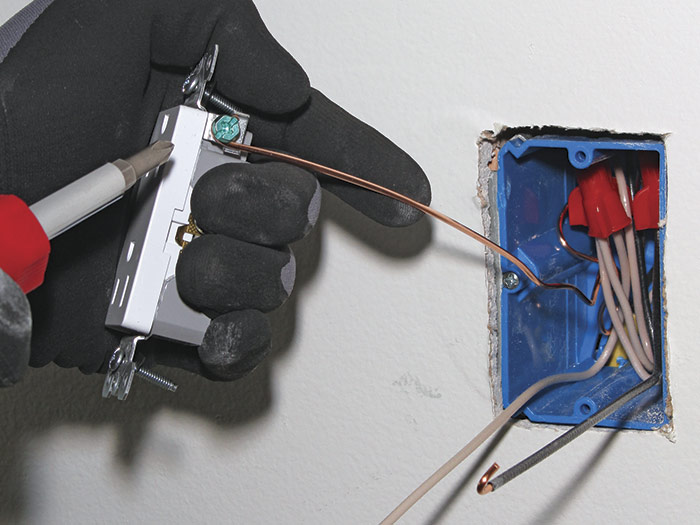
Next, loop and attach a neutral conductor to a silver screw terminal 2. Then flip the receptacle over to access the brass screw terminals on the other side. If a looped wire end is too wide, use needle-nose pliers to close it.
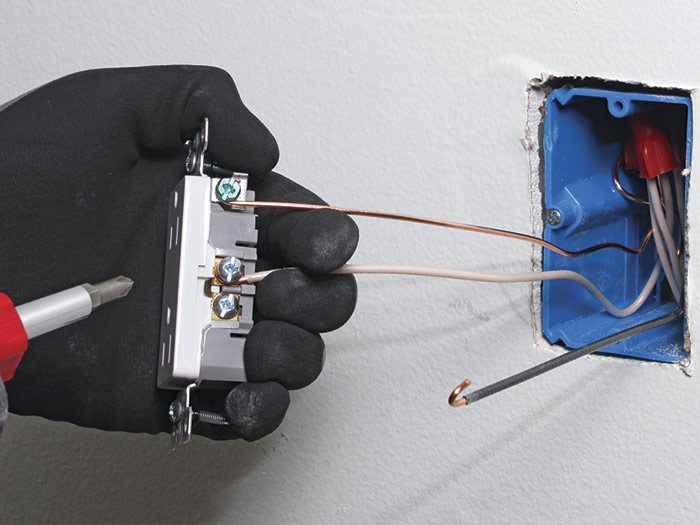
| PRO TIP: Many electricians also tighten down the screw terminals that aren’t attached to wires, to reduce radio-frequency interference and static. It’s only a theory, but in an electronic world, it seems like a good practice. |
Screw down the brass screw so that it grips the hot wire 3. Pros frequently use screw guns for this operation, but weekend electricians should tighten the screw by hand to ensure a solid connection.
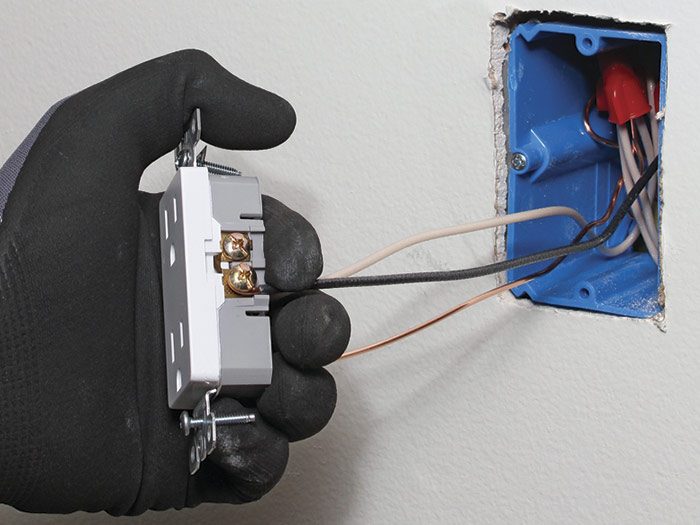
Push the wired receptacle into the box by hand, keeping the receptacle face parallel to the wall 4. You can hand-screw the device to the box, but if you take it slow and use a fresh bit, a cordless drill/driver is much easier. Finally, install a cover plate to protect the electrical connections in the box and to prevent someone from inadvertently touching a bare wire end or the end of a screw terminal.
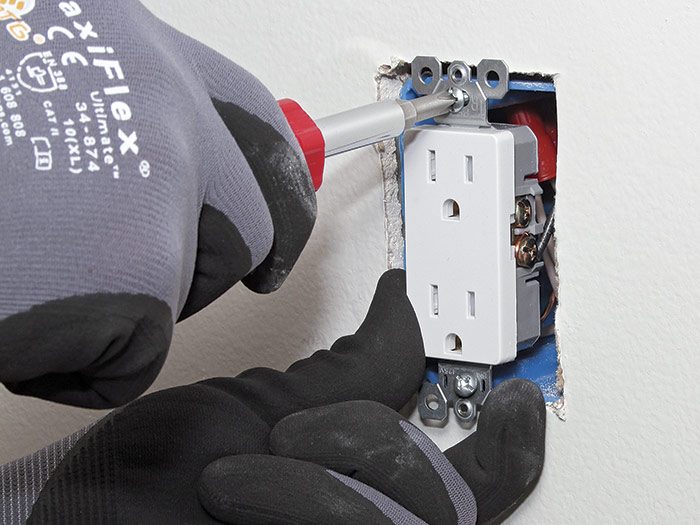
Wiring a duplex receptacle at circuit end
When a receptacle is at the end of a circuit—where only one cable feeds an outlet—there’s no need for pigtails. Just attach incoming wires directly to the receptacle as shown in the photo at far right. As with pigtail wiring, connect the ground wire first, then the neutral, then the hot wire.
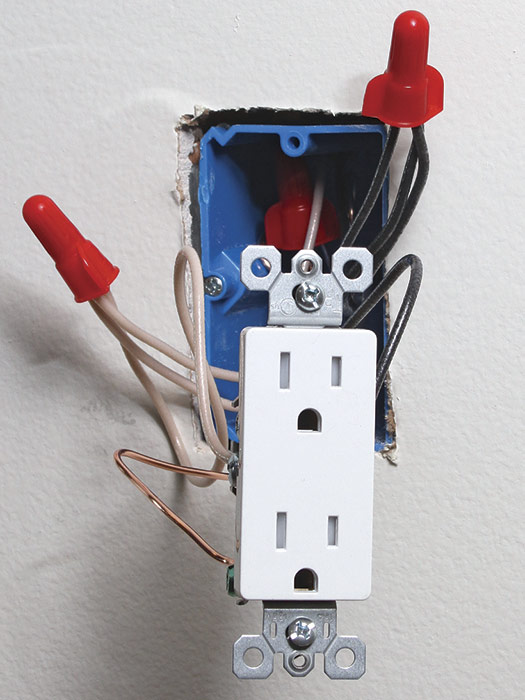 |
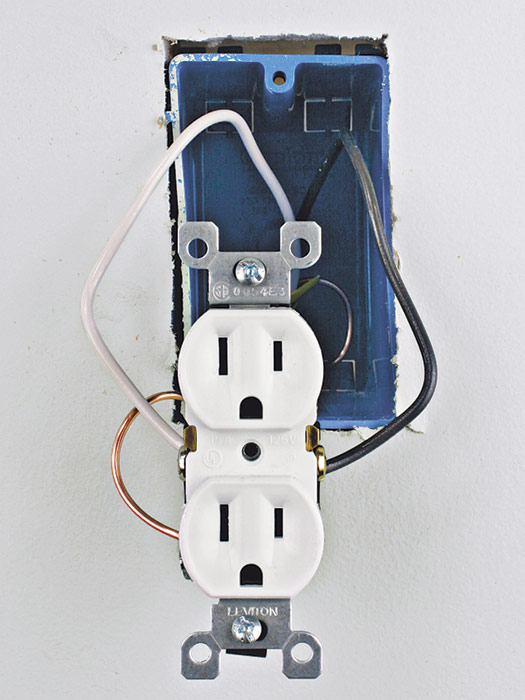 |
Wiring in an Orderly WayAny habit that increases your safety is worth adopting. When connecting wires to devices, most electricians connect the ground wire first, then the neutral wire, and then the hot wire. When disconnecting wires, they reverse the order: Disconnect the hot first, then the neutral, then the ground wire. Because the ground wire offers the lowest impedance path to ground, it makes sense to leave it connected as long as possible. Even if you’re working on circuits that are disconnected, as veteran electricians say, “Treat every conductor as if it were live and you’ll stay alive.” |
Excerpted from Wiring Complete, 3rd Edition (The Taunton Press, 2017) by Michael Litchfield and Michael McAlister
Available at Amazon.com.

